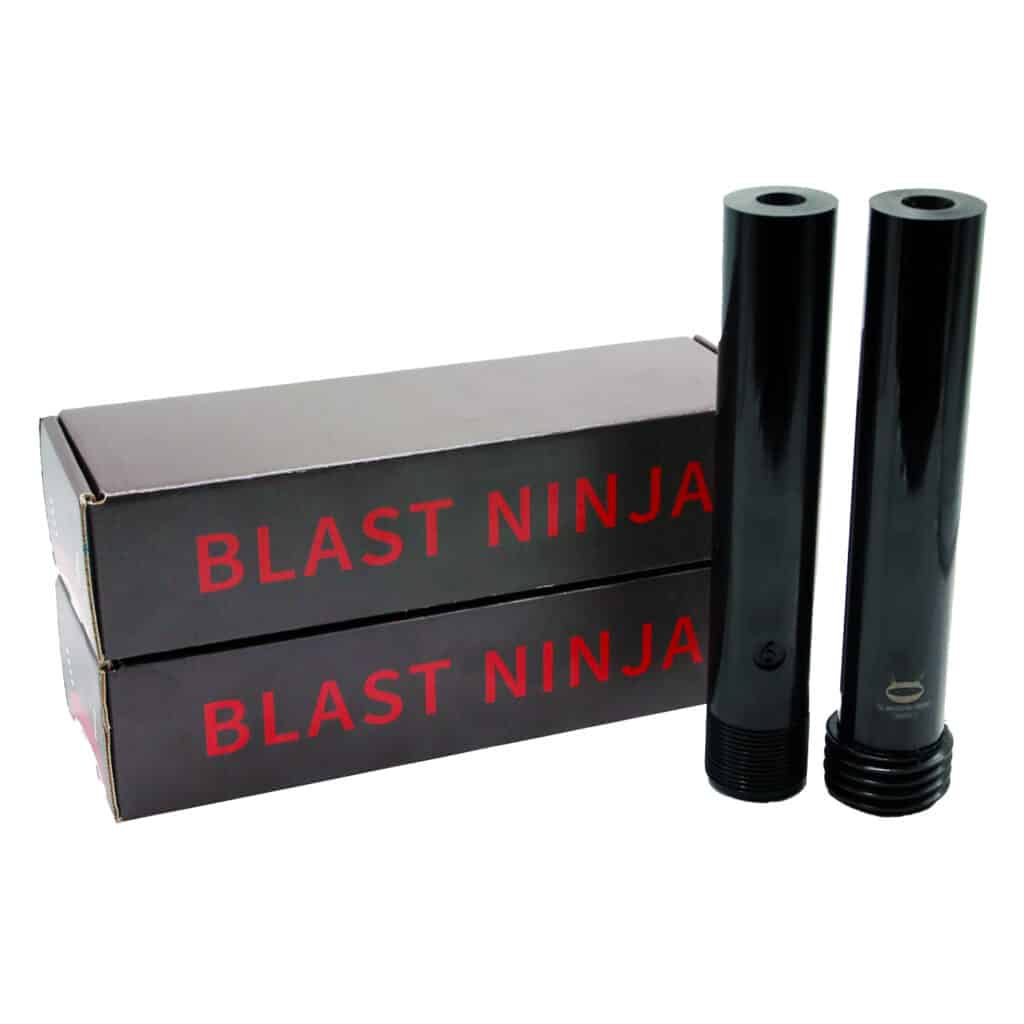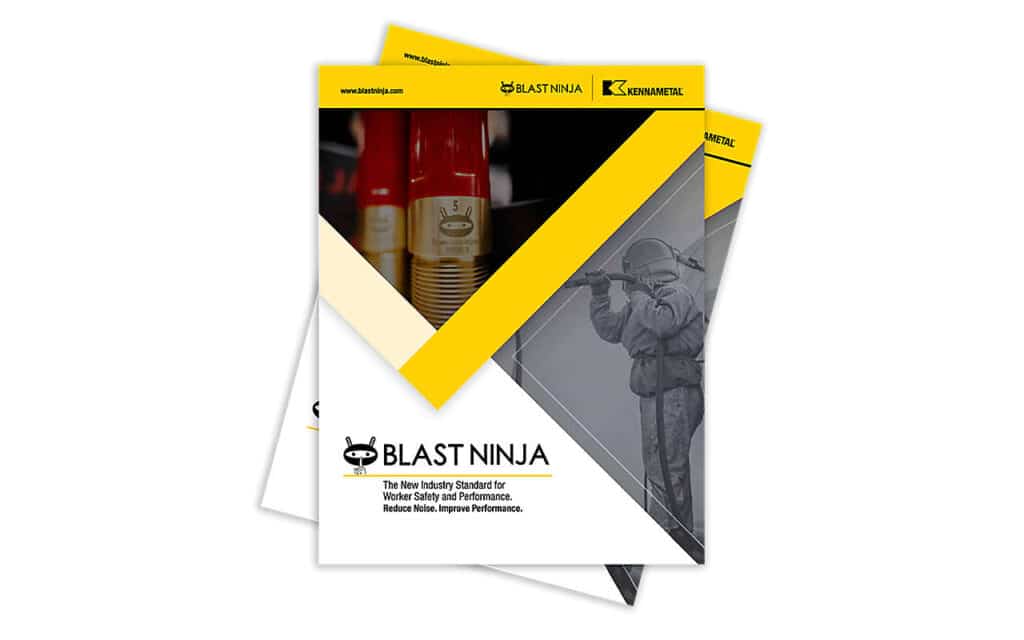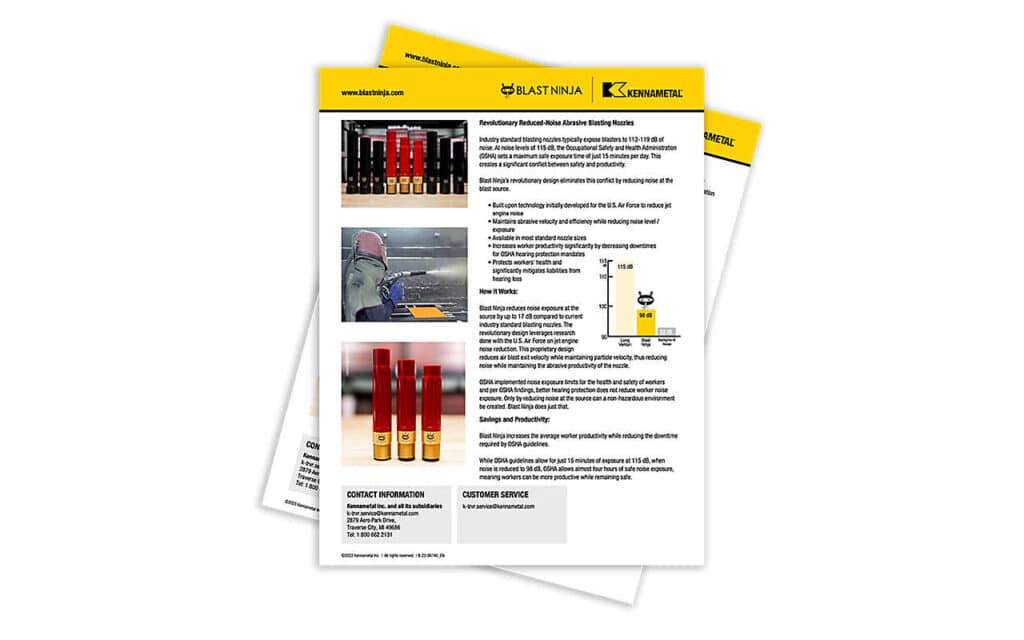BLAST NINJA® NOZZLES
SETTING a NEW STANDARD IN NOZZLE TECHNOLOGY: Advanced Noise-Reducing Blast Ninja Nozzles
Blast Ninja Nozzles from Kenametal are cutting-edge abrasive blast nozzles designed to significantly reduce noise exposure while maintaining optimal blasting performance. Developed through extensive research in collaboration with the U.S. Air Force and Office of Naval Research, these nozzles minimize noise production by lowering the air exit velocity without compromising particle velocity.

OSHA COMPLIANCE
OSHA has implemented noise exposure limits for the worker’s health and safety. Exposure to high levels of noise can lead to: hearing loss, tinnitus (ringing in the ear), stress, anxiety, high blood pressure, gastrointestinal problems, and chronic fatigue. As a rule of thumb, every 3 dB change represents a halving of sound energy.
At 115 dB, the average volume of abrasive blasting operations, OSHA regulations allow for just 15 minutes of exposure. Operator downtime creates excess costs associated with an idle asset. Per OSHA requirements, better hearing protection does not reduce worker noise exposure. Only by reducing sound at its source will a worker experience non-hazardous noise.
In certain conditions, Blast Ninja can meet OSHA’s noise standard compliance 29 CFR 1910.95 of four hours of exposure, meaning that operators are protected, and productive work time is improved. The standard uses a 5 dBA exchange rate; so for every 5 dBA TWA increase in noise permissible exposure time is cut in half. The reduction in employee exposure to hazardous noise to below the OSHA 8-Hour Time Weighted Average alleviates employer’s need to modify employees’ current practices, reduces the likelihood of injury in the case of PPE failure, and ensures that personnel in adjacent “safe zones” are guaranteed to be safe from exposure.



